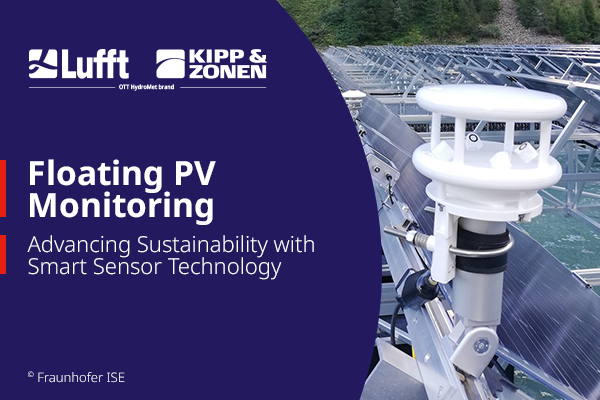Next week we will present a sensational new product at the annual meeting of the American Meteorological Society representing the first member of a weather sensor family of the latest generation. It is so precise that even calibration laboratories have difficulty in determining its accuracy. Lufft development manager Axel Schmitz-Hübsch provides you more details of the new achievement in the following blog post…

My name is Axel Schmitz-Hübsch and I’ve been responsible for the sensor development at Lufft for 25 years now. I have a passion for technology and sensors since my student days. In my spare time I like to cook for my family and every hobby chef knows how important the right ingredients are for a festive dinner.
In the development of our new professional compact weather sensor family WS1000, we also used the best ingredients in order to meet the WMO standards, and to bring a new sensor family into being which is more precise than ever before.
Moreover, our aim was to develop a weather sensor whose electronic parts are drift-free and whose single sensors are stable in long-term. Moreover the construction needed to be easy to maintain and to calibrate everywhere.
The compact weather sensor WS3000 measures temperature, relative humidity and air pressure. For the temperature measurement we use our circuitry combined with a wrapped PT sensor element which has proven its worth over many years. This combination has a drift of typically 10 mK/a. For the relative humidity a capacitive humidity sensor with a fast reaction time even in moist environments is in use. For the air pressure measurement we decided to implement a quartz resonator principle, because only such types of sensors meet our high expectations. For airport applications the WS3000 can be equipped with a second air pressure sensor.
The temperature and humidity measurement are ventilated. For this, we use a fan with speed control and additional monitoring. The fan has a life cycle of 180.000h (equaling about 20 years). The sensors and the fan are connected to the main housing via plug with a protection class of IP68. Thus replacement or calibration processes are quite simple. The main housing is made of aluminum and is anodized.
Besides the standard RS485 interface, the WS3000 contains an extra WLAN module. On this interface you can access the device via smartphone, tablet and laptop. An on-site check is therefore easier than ever before. Of course the WS3000 supports all common protocols and new protocols are easy to integrate. Also the customer-induced calibration leaves nothing to be desired: no matter if one-, two- or multi-point calibrations – everything is possible.
The field tests of the WS 3000 are already running at full speed and in mid-2016 the series production will start. Other variants of the WS1000 family are planned for 2016 and 2017.
All those who would like to see the sensor live, should visit us spontaneously at this year’s meeting of the AMS (American Meteorological Society) in New Orleans which will take place between January 10 and 14. There you find us at booth number 710.
 |
About the author: My name is Axel Schmitz-Hübsch and I’ve managed the development department at Lufft for 25 years now. My curiosity for technology was aroused during my youth already and then I transformed my hobby into a profession. Since then, I’ve been always looking for new ways to improve our products or to invent new ones. Through this grasp at improvements, my team and I manage to finish at least one development project per year. |


